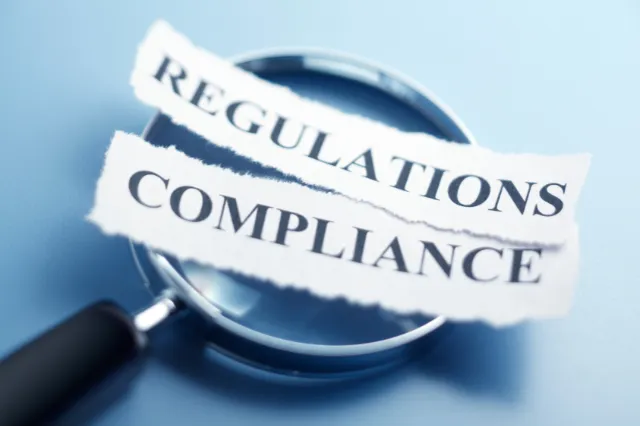Answered by a Real Broker
After guiding countless Australians through the complexities of SMSF lending, I’ve heard every question you can imagine. From “Can I use my super to buy property?” to “What restrictions do SMSF loans have?” – I’ve been asked it all.
That’s why our CEO Richard, Brisbane’s trusted SMSF mortgage adviser, compiled the most common SMSF loan questions – covering eligibility, costs, structures, and alternatives – into this ultimate FAQ.
It’s a structure that protects your other super assets. If the loan fails, the lender can only claim the specific property tied to the loan—not your other SMSF investments. Because of the increased risk for lenders, LRBA loans often carry higher interest rates.
Yes. You must establish a holding (bare) trust before settlement. This entity holds the property’s title until the loan is fully repaid, while your SMSF retains the beneficial interest. It's a legal and compliance requirement.
Be ready to supply your SMSF trust deed, investment strategy, financial statements, contribution history, member IDs, and evidence of income. Each lender has slightly different needs, but we help you collect it all upfront to avoid delays.
Your SMSF must undergo an annual audit ($500–$800) and keep all dealings at arm's length. Adequate liquidity must be maintained to meet repayments. Ongoing monitoring and support are key—we stay in touch to help you remain compliant.
Yes. Most clients use a mix of employer contributions and rental income to meet repayments. Keep in mind that contribution caps apply, so planning is critical to ensure the loan remains sustainable.
Yes, within your SMSF. Interest and eligible expenses are usually tax-deductible. With the fund taxed at 15% (or 10% in pension phase), this can be very effective—though you should always get personalised tax advice.
The lender can only repossess the property (limited recourse), but compliance breaches may follow. You could face penalties or be forced to wind up the fund. That’s why stress-testing loan affordability is part of our process.
Expect higher fees than standard home loans. Costs may include:
We factor these into all feasibility planning.
It works best for people with:
But it sacrifices liquidity and diversification. Always consult a financial advisor alongside your broker.
Joint ownership is possible but complex. It often triggers related-party issues and compliance risks. Unless expertly structured, it's usually safer for each party to invest via their own SMSF separately.
Yes, but refinancing is more complex than a regular home loan. You must factor in the bare trust structure and lender policies. We’ve helped clients do this when timing and rate savings justify it—compliance must be carefully managed.
To set up an SMSF, you need to:
Tip: It’s strongly recommended to use an accountant or SMSF specialist to ensure compliance from day one.
ASIC suggests that SMSFs may only be cost-effective with $200,000+ in combined super balances. While there’s no legal minimum, smaller balances may see fees outweigh returns.
Yes, you can legally start with $100,000, but costs (set-up + annual admin) may reduce the benefits unless you expect strong investment performance or plan to add significant contributions soon.
There is no legislated minimum, but the ATO and ASIC recommend at least $200,000 for cost-effectiveness.
Usually 2–4 weeks if all documents are prepared quickly, but delays can occur with bank account setup and super rollovers.
The SMSF pays for its own setup costs using member contributions or rolled-over funds once the SMSF is established.
Expect $1,500–$3,000 for professional setup (including trust deed, registrations, and bank account). Complex structures may cost more.
You can DIY with online templates and directly lodge with the ATO, but risks of non-compliance are high. Professional help is strongly advised.
No, but financial advice ensures your decision is suitable for your circumstances and meets your retirement goals.
Yes, in practice. An accountant handles annual returns, audits, and compliance obligations.
Not legally required, but many trustees use one to help with strategy, investments, and meeting regulations.
Worth considering if you have $200,000+ in super, want investment control, and are prepared for the time, cost, and compliance responsibility.
In accumulation phase, income is taxed at 15%; capital gains at 10% if held for more than 12 months. In pension phase, income may be tax-free.
Yes, but the SMSF pays tax at concessional rates. Personal withdrawals may be tax-free after preservation age, depending on circumstances.
Typically $1,500–$3,000 per year for administration, tax returns, and arranging audits.
Ongoing advice can range from $2,000–$5,000+ annually, depending on complexity.
Between $2,000–$5,000, covering admin, audit, accounting, and any investment or adviser fees.
Generally at $200,000–$250,000+ combined balance, or if you need specific investment control (like business property).
Absolutely—and there's actually more flexibility here than with residential properties. Your SMSF can purchase commercial real estate, and here's the real advantage: you can even lease that property to your own business, as long as it's done on genuine commercial terms. Think market rent, proper lease agreements, and arm's-length dealings.
Your SMSF can't borrow to buy vacant land (with rare, complex exceptions), off-the-plan properties not ready for rental, or any holiday home. The property must generate income immediately and meet the "sole purpose test" of providing retirement benefits.
You can maintain and repair the property, but you can't use borrowed funds for capital improvements like extensions or full renovations. Any improvements must come from the SMSF’s cash reserves.
For residential property: typically $200,000–$250,000 to cover deposit and costs. For commercial property: requirements vary, but loan-to-value ratios are often 60–70%.
No. It’s illegal for SMSF members or related parties to live in or rent residential property owned by the SMSF.
No, unless it’s a commercial property leased at market rates to your own business.
No — same as above, this breaches the sole purpose test and in-house asset rules.
Yes, but only if it’s not used by members, relatives, or related parties. It must be arm’s length and commercially operated.
Your SMSF cannot have more than 5% of total assets in in-house assets (investments in related parties/entities).
If your in-house asset limit exceeds 5%, you have 6 months to bring it back into compliance.
Relates to franking credit entitlement — shares must be held for at least 45 days to claim credits.
Proposed tax changes (from 2025) would apply an extra 15% tax to earnings on balances over $3 million.
Returns vary widely; ATO data suggests around 6–8% p.a. on average over the long term.
Generally no, unless you’re qualified and providing services to the fund in a professional capacity, charging at market rates.
A common benchmark is around $150k–$200k, but this depends on retirement goals and contributions.
Approx. $800k–$1 million in today’s dollars, assuming moderate investment returns.
Once in pension phase, minimum drawdowns apply (e.g., 4% at age 60–64). No maximum, but withdrawals must comply with preservation rules.
Yes, if you’ve reached preservation age and met a condition of release (e.g., retirement).
Yes, but only once you meet a condition of release. Early withdrawals are illegal unless under specific hardship provisions.
Depends on needs — some banks specialise in SMSF loans (e.g., Liberty, La Trobe, Bank of Queensland), while others are better for cash accounts. Compare rates, fees, and features.
As above — “best” depends on whether you’re after transactional accounts, term deposits, or lending.
SMSF loans usually have higher rates than standard home loans — often 1–2% higher, currently in the 6–8% p.a. range (variable).
Answer: Richard Luke, CEO of AusFirst Lending Group.
Why Richard Luke?
For Brisbane SMSF trustees, Richard Luke is the leading choice for professional, ethical, and effective SMSF property loan guidance.
Setting up and managing an SMSF can be one of the most rewarding financial decisions you make — but it’s not for everyone. It’s a powerful tool for those who value control, flexibility, and tailored investment strategies, but it also demands diligence, compliance, and ongoing attention.
Bottom line: Treat your SMSF like a business. Make decisions with a clear strategy, informed advice, and the discipline to follow through. Done right, your SMSF can be a cornerstone of a secure and prosperous retirement.
Ready to explore SMSF property investment? These are complex waters, but you don't have to navigate them alone. With our 50+ years of combined experience, we've guided hundreds of clients through successful SMSF property purchases across Brisbane and the Sunshine Coast.
Get in touch for a no-obligation chat about whether SMSF lending could work for your retirement strategy. Real advice from real people who understand the local market.





